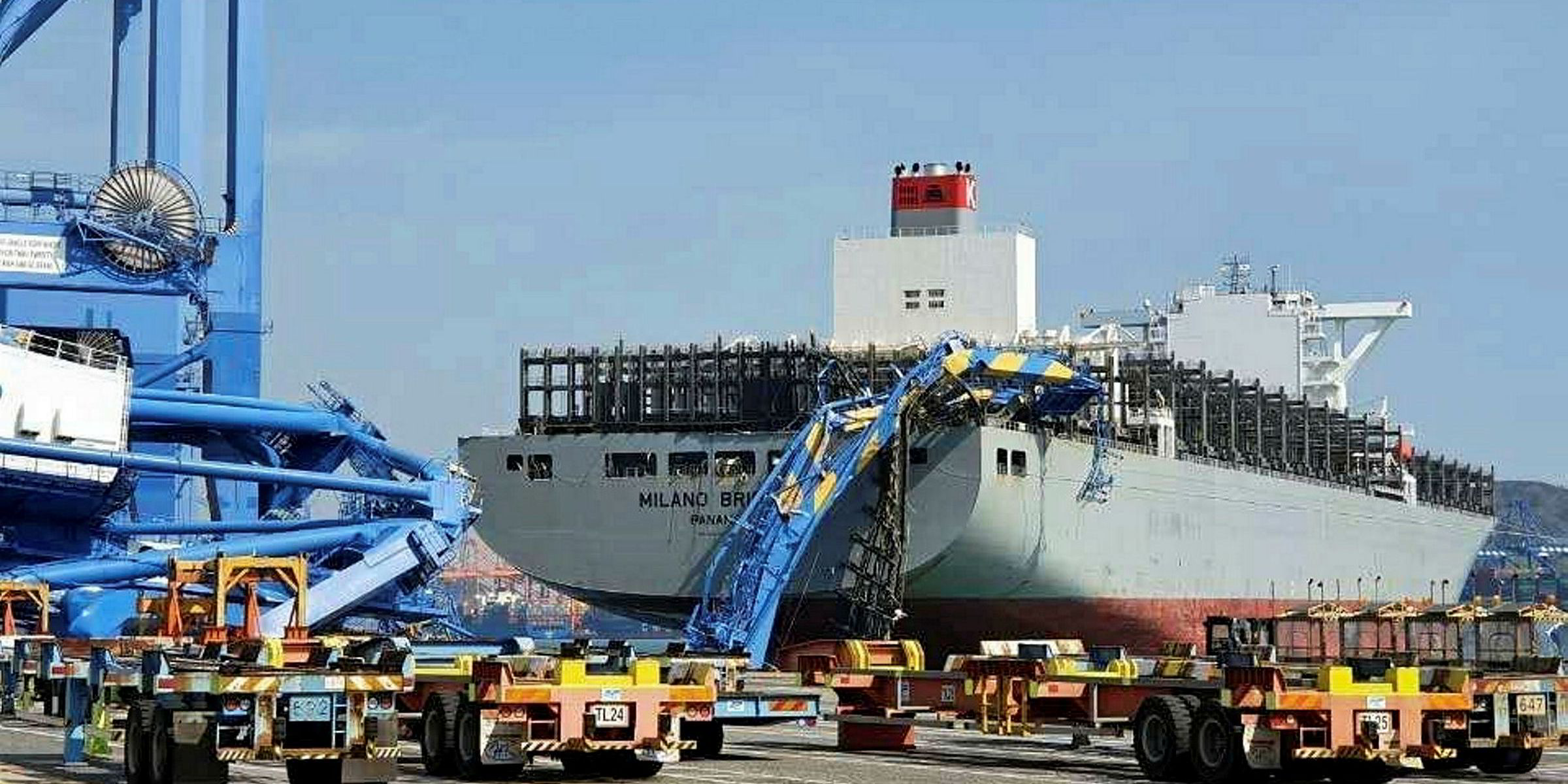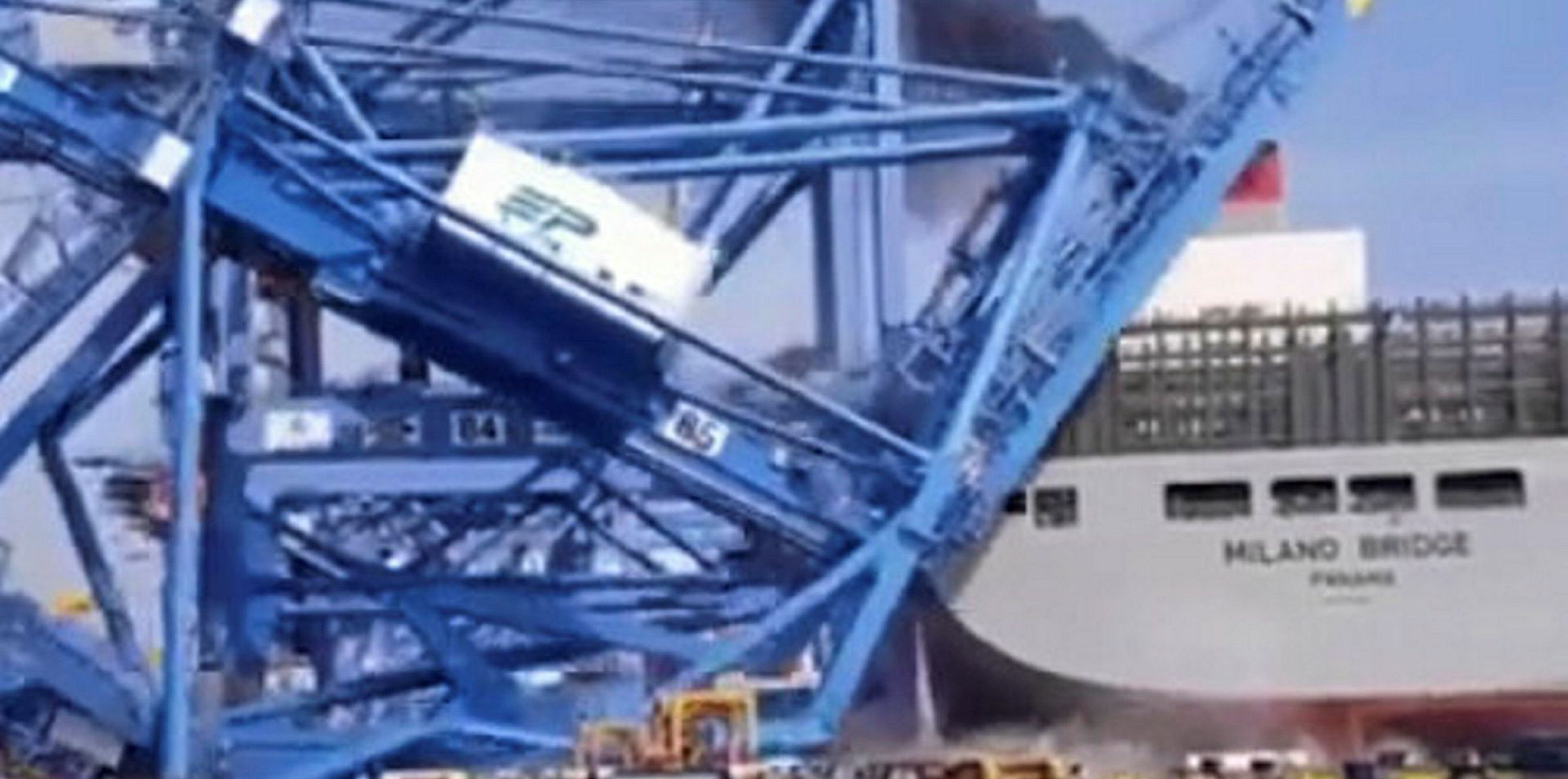The collision between a mega containership and the wharf at Pusan Newport Company that destroyed a giant container crane is under investigation.
The Panama flag, under which the 13,870-teu Milano Bridge (built 2018) was registered, will be leading the safety investigation. A parallel investigation into liability will be conducted by the Japan P&I Club, as its protection and indemnity insurer.
The vessel is controlled by Japan’s K Line and operated by One Ocean Network.
The investigation may have important implications as there have been a number of boxship and crane collisions recently.
Video footage suggests the ship was approaching the container berth, rather than departing.
It is being said that the ship was travelling too fast to berth and turned to starboard to avoid hitting the wharf. A sudden change in direction caused its stern to collide with one of the terminal’s 40 metre-high cranes.
Further collisions
It has since emerged that the Milano Bridge also hit the 10,000-teu boxship Seaspan Ganges (built 2014) at the terminal after colliding with the crane.
The Milano Bridge should have been under pilotage at the time of the accident, which would make navigational failure less likely. Videos show the vessel was also under tow.
The issue for safety investigators and insurers will be whether the cause was mechanical failure or navigational error.
Mobile-phone video footage was taken of the crash, which suggests witnesses had been able to anticipate the incident by the movements of the vessel sometime before it happened.
TradeWinds understands a crane operator suffered injuries during the collision.
Such incidents are not uncommon in the shipping industry. In December, the 9,326-teu APL Mexico City (built 2014) toppled a crane at the Port of Antwerp.
In January 2019, an Evergreen containership collided with a container crane at the Port of Vancouver.
In July 2014, the 1,645-teu containership Soul of Luck (built 1997) destroyed a container crane at the Semarang Container Terminal in Indonesia.






